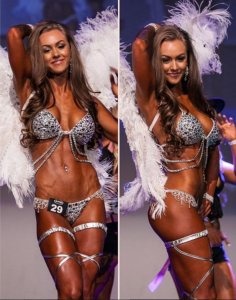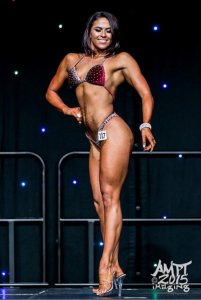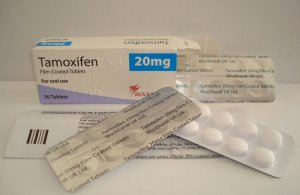This weekend was a bad weekend for female physique athletes in Australia. News Corp Australia’s The Sunday Times (Western Australia) published the results of a three-month investigation into the dark side of female bodybuilding on January 24, 2016. The tabloid Sunday paper alleged that a growing number of female fitness, physique and bodybuilding competitors were using performance- and image-enhancing drugs (PIEDs) such as anabolic steroids, peptide hormones and estrogen blockers to achieve the “perfect body”.
Sasha Heber, the Miss Western Australia Overall Fitness Champion in Australasian Natural Bodybuilding Federation (ANB), was featured prominently in the Sunday Times investigation with her photograph gracing the cover of The Sunday Times Magazine insert.
Despite The Sunday Times’ use of Heber’s images to promote its story, Heber did not directly criticize the sport. Heber only provided first-hand information about the training and dieting required to win a physique competition.
She discussed training four hours per day for 20 weeks prior to the contest. She discussed strict diets and carbohydrate restriction. She discussed extreme fluctuations in water intake and the use of herbal diuretics as techniques to reduce extracellular water in the days before stepping on stage. Heber described the practices as reflective of her dedication to being the best in her sport.
“You put your body through so much stress,” Heber said. “Just to put my shoe on at the end was an absolute mission.”
“You do get quite skinny. You get gaunt in your face. I probably had bags under my eyes and towards the end I wasn’t sleeping very well.”
“I wasn’t getting many carbs and I was finding it hard to sleep through the night. You’re drinking so much water you’re probably getting up three times a night to pee.”
Rather than a piece celebrating the dedication, determination and sacrifices of female physique athletes, the article was a hatchet job aimed squarely at demonizing women’s physique competitions as extreme and psychologically dysfunctional.
Heber was apparently caught off-guard when the final report hit the newsstand. She quickly found herself defending her participation in the project. In a message posted on her Instagram account, Heber distanced herself from the sensationalistic perspective presented in the report.
“While I don’t agree with everything said in these articles and the girls who worked so hard and have been portrayed the wrong way isn’t fair. It’s not a sport for everyone it is tough and we do go to extremes to be the best but so does any sport. It is a incorrect (sic) representation of what there pointing out I think there is a issue (sic) but it has been raised the wrong way and people are just uneducated. Not everyone can do what we do.”
However, Heber did acknowledge that the use of drugs, particularly “estrogen blockers”, was “common” in the female physique competitions. This was enough to shift the conversation from the dedication and hard work of female physique athletes to the reckless drug use by female physique athletes.
Natural physique competitor Tamara Legge was also interviewed by The Sunday Times. She implied that there were some physique coaches in Western Australia who pushed their athletes to use all sorts of drugs in order to improve their physiques. Legge even suggested that these coaches were recommending crack cocaine to help with weight loss. The reporter failed to follow up to confirm whether Legge was joking or serious. Without the clarification, readers took the comments at face value.
“Estrogen blockers” are one category of drug that Heber and Legge agreed were “commonly” used by female bodybuilders. Estrogen blockers refer to selective estrogen receptor modulators (SERMs) such as Nolvadex. This category of drug can facilitate fat loss and promote the appearance of a much leaner physique particularly in women.
“Massive, massive,” Legge described the use of estrogen blockers in the sport. “I know some coaches are very big on suggesting stuff like that, especially to new girls in the industry.
“I’m lucky. I haven’t had stupid coaches that have said ‘Yeah let’s stick you on this’ or ‘You can smoke a crack pipe a couple of weeks before your comp to lose weight’.”
While most physique competitors and industry participants were appalled by the characterization of the sport by The Sunday Times, others were happy to jump on the bandwagon to demonize the sport.
Amanda Fisher, the co-owner of Bangin’ Bodz Personal Training in Miami (Queensland), confirmed that she personally knows competitors who use cocaine, peptide hormones and other illegal fat loss drugs like the beta-agonist clenbuterol.
“I know competitors who drink wine to help them dry out and they use cocaine and peptides and Clenbuterol, which helps to get rid of body fat quite quickly,” Fisher told news.com.au. “I’ve seen people so exhausted [after a competition] that they can’t speak or string a sentence together.
“You get so tired in the lead up and you just have to keep training. You get dehydrated when you train, and to be exercising while using a drug that also dehydrates you creates a really bad effect.”
Fisher had previously competed at the ANB Asia Pacific Championships. So she speaks from experience. She found The Sunday Times investigation to be an accurate reflection of everything that really goes on. Fisher even suggested that the “natural” competitors and federations were just as bad as any other federation. Drug testing is sporadic at best and, in most cases, non-existent in the so-called natural federations.
“No one really talks about it, but everyone sort of knows that it goes on,” Fisher said. “They’re getting smarter with it as well, because there’s a lot of people who can enter natural competitions but still use peptides, but they only use up to a certain level of it, so they don’t get into trouble.”
There are limits to the changes one can make through training and diet alone. This makes PIED use an important part of physique competitions. Given the stigma of steroids and PIEDs, female athletes have every incentive to keep the practices a closely-guarded secret.
“That’s why steroids and peptides are so popular, because getting that muscly naturally is really hard. You’re fighting your genetic makeup, which is why they have things like estrogen blockers and testosterone boosters.
“You go on Instagram and see these girls getting frustrated because they say, ‘I’m doing everything that this woman says she’s doing, how come I can’t reach this point too?’ These girls are keeping a lot of the darker side of things behind closed doors.”








